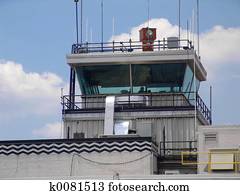

The information is broadcast to any airplanes or ground station with an ADS-B receiver. Position, velocity, and other airplane information are surveillance data transmitted. The transmission is dependent on proper operation of on-board equipment that determines position and velocity and availability of a sending system. Other parameters in the transmission are preselected and static. Position and velocity information is automatically transmitted periodically (at least once every second) without flight crew or operator input. ADS-B is also effective in remote areas where there is no radar coverage or where radar coverage is limited. Unlike conventional radar, ADS-B works at low altitudes and on the ground so that it can be used to monitor traffic on the taxiways and runways of an airport. ADS-B receivers that are integrated into the ATC systems on the ground or installed aboard other airplanes (i.e., ADS-B In) provide users with an accurate depiction of real-time aviation traffic. Airplanes equipped with ADS-B Out broadcast precise position and velocity to ground ADS-B receivers and to other airplanes via a digital datalink (1090 megahertz) along with other data, such as the airplane’s flight number and emergency status. Navigation satellites send precise timing information that allows airplanes equipped with global navigation satellite system (GNSS) or GPS receivers to determine their own position and velocity. The maximum range between the transmitting and receiving airplanes is greater than 100 nautical miles (nmi), allowing the CDTI to display traffic both near and far. The received ADS-B signal is called ADS-B In. After reception of the ADS-B signals by the receiving airplane, the lateral position (latitude and longitude), altitude, velocity, and flight number of the transmitting airplane are presented to the receiving airplane pilot on a Cockpit Display of Traffic Information (CDTI). ADS-B Out signals are also received by other airplanes in the vicinity of the transmitting airplanes. ADS-B Out signals are received by ATC ground stations for display of traffic to air traffic controllers. The ADS-B Out signals travel line-of-sight from transmitter to receiver. ADS-B Out signals are sent from the transmitting airplanes to receivers located on the ground or in other airplanes. It will also explain how ADS-B will increase flight crew awareness of other airplanes in the air and on the ground, highlight potential operator benefits, and outline the upcoming equipage mandates.ĪDS-B uses a combination of satellites, transmitters, and receivers to provide both flight crews and ground control personnel with very specific information about the location and speed of airplanes in the area (see fig. 1).įigure 1: How ADS-B works By using a combination of satellites and receivers, ADS-B provides both flight crews and ground control personnel with information about the position and velocity of airplanes in the area.įrom the airplane perspective, there are two aspects to ADS-B. This article explains the new ADS-B technology, how it works in the airplane, how it is used in ATC, and how this technology benefits ATC surveillance on the ground. In addition, the FAA states that ADS-B will serve as the cornerstone for this transformation, bringing the precision and reliability of satellite-based surveillance to the nation’s skies. For example, large expanses of Australia and Hudson Bay in Canada, currently without any radar coverage, are now visible on ATC screens after strategic placement of low-cost ADS-B receiving stations.įor NextGen and SESAR, ADS-B is one of the most important underlying technologies in the plan to transform ATC from the current radar-based surveillance to satellite-based global positioning system (GPS) surveillance. SESAR is a similar effort in Europe.ĭeveloped and certified as a viable low-cost replacement for conventional radar, ADS-B allows ATC to monitor and control airplanes with greater precision and over a far larger percentage of the earth’s surface than has ever been possible before. Federal Aviation Administration (FAA) to transform the air traffic control (ATC) system to support a larger volume of airplanes more efficiently.


It provides foundational technology for improvements related to the Next Generation Air Transportation System (or NextGen) and Single European Sky Air Traffic Management (ATM) Research Programme (or SESAR). ADS-B is a new surveillance technology designed to help modernize the air transportation system.


 0 kommentar(er)
0 kommentar(er)
